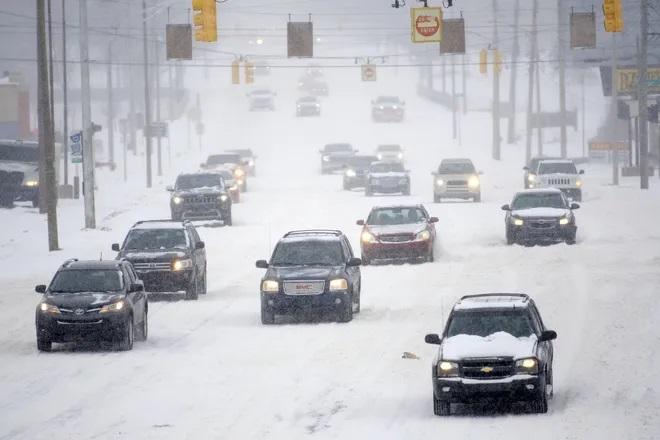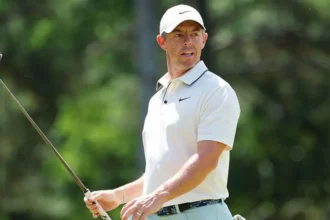Automotive sports are great fun. They offer fierce competition and high speeds and bring joy to all kinds of spectators. Autosports also have twice the number of stars compared to regular disciplines. There are drivers and cars, and both are equally crucial.
And obviously, such an activity comes with its own risk. Just the speed provides plenty; it’s impossible to avoid the laws of physics. And while preventative measures and safety devices have come a long way during the last few decades, tragic things still happen. Our article aims to cover the main dangers of automotive sports and include some of the most notable deaths and crashes.
While autosports are popular for betting, we won’t go into detail about this process; instead, we will just cover the dangers and crashes. There are plenty of other articles if you want to learn more about wagering. For example, you can check out this BetWinner Login Kenya review.
Overall Dangers
It’s to be expected that autosports feature many risks. High speeds, many vehicles, and uneven terrain (in the rally) tend to do that. Let’s check the list of main dangers and hazards that can happen:
- High-speed crashes. The sports often involve great speeds, which can lead to serious crashes that can sometimes be fatal. This usually happens if the drivers lose control of their vehicle at such speeds.
- Explosion and fire. Manufacturers usually use highly flammable substances as fuel. If we combine that with the potential for collisions, there will be a risk of fires, which can be dangerous for drivers and spectators alike.
- Physical demands. Driving at high speed for extended periods of time can cause a lot of physical strain. Which, in turn, can lead to fatigue, dehydration, and other effects, some of which might cause the drivers to have worse levels of control.
- Mechanical failure. Modern cars and motorcycles are impressive feats of engineering, especially those that compete at a high level. This means mechanical issues can occur, resulting in crashes and other problems.
- Spectators safety. The spectators are usually at risk of injury from flying debris, crashes, and other hazards associated with high-speed racing. While a lot of work was done to improve the spectators’ safety, some event organizers tend to care less about it or ignore it altogether.
- Environmental impact. Autosports can cause air and noise pollution, have the potential for fuel and oil spills, and can affect the environment negatively in various ways.
- Effect on driver’s mental health. The pressure and high level of competition in autosports, as well as other things, can negatively affect the mental health of a driver. This may lead to stress, anxiety, and other psychological challenges.
The Most Famous Crashes
This section will be even darker than the rest of this article. Here, we will list the best-known crashes and hazards that happened in the history of autosports. Unfortunately, some of them were fatal. We will also include the safety measures that the organizers start to enforce after these crashes.
Ayrton Senna
Probably the most famous crash in the history of F1, the death of Ayrton Senna, occurred on May 1st, 1994, in Italy. Senna was an acclaimed Brazilian driver. He has won three World Championships and 41 Grand Prix. He started his career at Lexus, moved to McLaren, and switched to Williams in the last year of his career.
On the day of his crash, Senna was quite successful at the race. But some time later, he went off track at a speed of roughly 311 km/h. A few seconds later, a collision happened when his car went straight into a concrete wall. The data that was later acquired confirmed that the crash happened at a speed of over 200 km/h. This resulted in fatal injuries and massive blood loss, causing death.
The Imola circuit race that Senna competed in was full of problems and disasters from the start. The day before Senna’s crash, Roland Ratzenberger crashed into a concrete wall at a speed above 300 km/h. Senna’s death overshadowed this loss. In the next section, we will discuss Ratzenberger and his crash. Both deaths and smaller crashes at that Grand Prix were significant for F1 to implement stricter safety features, devices, and measures.
Roland Ratzenberger
Roland Ratzenberger, who died just a day before Senna, received much less attention than a Brazilian legend. This happened during the qualifications for the same Grand Prix. He lost control of his car and ran into a concrete wall at a speed higher than 300 km/h. It’s the highest g-force crash in the history of F1, measuring at 500g. There were three fatal injuries at once: ruptured aorta, blunt force trauma, and fractured skull. The latter was an official cause of death and is one of the reasons why F1 implemented using the HANS (Head and Neck Support) device in 2003, nearly a decade later. This device can prevent the exact type of skull injury that Ratzenberger suffered.
Gilles Villeneuve
A legendary Canadian driver, Gilles Villeneuve, had a short career and won six Grand Prix. He had an unusual start, entering the world of automotive sports as a snowmobile racer. He died on May 8, 1982, during the qualifications for the Belgian Grand Prix. After an unsuccessful maneuver, his car got launched into the air at a speed exceeding 200 km/h, landing on a catch fence. The fatal neck injury became a cause of death.
His son, Jacque Villeneuve, became a legendary F1 driver on its own merit, winning the World Champion title in 1997, being the only Canadian ever to do so. He had a successful career after that and eventually moved to NASCAR.
Dale Earnhardt
An iconic American NASCAR driver, considered by some to be the greatest, Dale Earnhardt, nicknamed “The Intimidator” for his very aggressive racing style, had an impressive career. It lasted for 26 years, during which he was a team owner and a driver who won 76 Winston Cup races.
Unfortunately, his career ended abruptly with the crash that occurred on February 18th, 2001. It was during the final lap of the 2001 Daytona 500. He lost control of his car after touching a competitor’s vehicle and sliding off course. After returning, his vehicle collided with more cars. In the end, his car crashed into a concrete wall at a speed of around 250 km/h.
His death caused the organizers of stock car racing events to rethink safety measures. To be more precise, it was a single point that had the most impact on these disciplines regarding safety improvements. It led to using HANS devices and SAFER barriers in NASCAR, even though the changes weren’t implemented immediately.
Bruce McLaren
One of the most successful drivers of all time, whose career spanned over 30 years, Bruce McLaren was a legend that every autosport fan knew and respected. This New Zealand driver had four important wins in F1, most notably the 1959 US Grand Prix when he became the first driver from his country to win. This also made him the youngest driver to win a Grand Prix. McLaren was 22 years old at the time. Fernando Alonso broke that record 43 years later. Bruce McLaren also had success at 24 Hours of Le Man.
He wasn’t only an impressive driver, as he also possessed incredible analytical and engineering skills. He founded the McLaren Racing Team, which went on to become one of the best-known and most successful in F1. The team is a constructor and later became a part of what’s known as the McLaren Group, an automotive manufacturer specializing in racing vehicles and hypercars.
Bruce McLaren died when testing the car his team developed. It was at Goodwood Circuit in England in 1970. He was just 32 years old at the time. The reason for the crash was the car lost rear bodywork that, causing McLaren to lose control and crash into a flag pole at high speed, dying instantly.
Conclusion
Autosport is sometimes brutal. The combination of fuel, speed, psychological stress, and even the basic laws of physics can sometimes lead to disasters. And while the organizers have significantly improved the safety measures for such disciplines, the risks remain.
This article covered the most significant crashes and deaths in the history of automotive sports. They were quite brutal, but they played a role in improving the safety of events. We also listed the dangers drivers and spectators can experience during the races.
Obviously, the risks don’t go away completely, even though they’re now significantly reduced with the help of many restrictions, measures, and safety devices. We hope the crashes will continue to become less deadly and safer as time passes.















